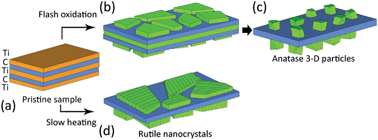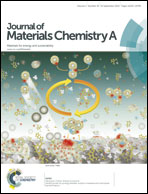In situ environmental transmission electron microscopy study of oxidation of two-dimensional Ti3C2 and formation of carbon-supported TiO2†
Abstract
Two-dimensional Ti3C2, also known as “MXene”, was oxidized in air under two different oxidizing regimes in order to produce carbon-supported TiO2. In situ TEM analysis coupled with Raman spectroscopy revealed the formation of either anatase nanoparticles or planar rutile nanocrystals, which were controlled by the time, temperature and heating rate.


 Please wait while we load your content...
Please wait while we load your content...